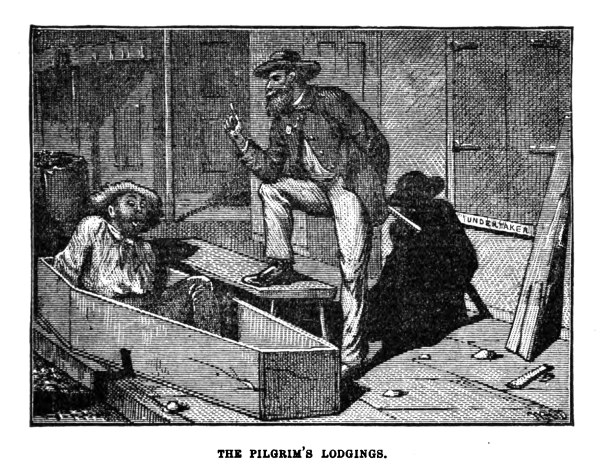Effect of the Bicycle on the Lumber Trade –
 The continuing and growing demand for bicycles has its effect upon the hardwood lumber trade. It is estimated that there will be produced in American factories this year nearly 800,000 bicycles.
The continuing and growing demand for bicycles has its effect upon the hardwood lumber trade. It is estimated that there will be produced in American factories this year nearly 800,000 bicycles.
Practically all of these are equipped with wood rims. Each wood rim requires 2½ feet board measure, and allowing one-third for waste, that would mean a consumption of 6,000,000 feet, almost exclusively rock elm. This is for the rims alone, to say nothing of the guards and handlebars, but of the latter there is another story.
The consumption of 6,000,000 feet or thereabouts of rock elm does not look very large in a business which is accustomed to deal with hundreds of millions, but when it is remembered that only about 15 per cent of hard maple is available for rim purposes, and that therefore 40,000,000 feet of one of the minor hard woods must be handled over in order to obtain this material, the importance of the bicycle demand in this special way will be recognized.
It has had a marked effect upon the market for rock elm. It has increased the price for that portion of the stock from which the rims can be made, has increased the product and consequently has somewhat overburdened the market with lower grades and with nondescript grades; that is to say, this business has involved the picking over of the better part of the rock elm stock to such an extent that the remainder is damaged for the general market.
It is a question whether the sometimes fancy prices secured for the bicycle stock have compensated for the injury done the remainder. Those who are interested in the manufacture and handling of rock elm should do some figuring in regard to this matter and see if their prices have been properly adjusted as between the grades suitable for the different uses.
We spoke above of wooden handlebars. That is to be the next thing in bicycles, according to authorities on the subject. Wood, principally hickory, perhaps a little ash, is to be used instead of steel tubing, not because of any decrease in weight, as that will remain about the same, but because of the superior elasticity of the wood, making the wheels easier to ride and less fatiguing to the hands and arms.
Furthermore, it will be an advantage to the manufacturers, as bent tubing is a difficult article to manufacture, whereas hickory can be bent into any desired shape; and then, again, the new bars will be cheaper. There is no prospect of any less number of bicycles being manufactured in the near future than in the present or the past and perhaps a million bicycles next year may be placed new upon the market. A considerable proportion of them, it is said, perhaps the majority, will have handlebars made of second growth hickory. That is another thing for the hardwood men to take note of.
But the consumption of lumber due to the bicycle trade does not stop with this. There is crating. What that amounts to no one seems to know; but about every bicycle sooner or later is invested with a crate of its own, and this requirement must mean a considerable increase in consumption of coarse lumber; so, though the bicycle is largely a thing of tubing, wire and forgings, it has some influence on the lumber trade, and what does not? The lumber trade is one which is in touch, in some way or other, with almost every branch of industry.
(…from The Timberman)
Stove and Hardware Reporter – May 28, 1896
—Jeff Burks





